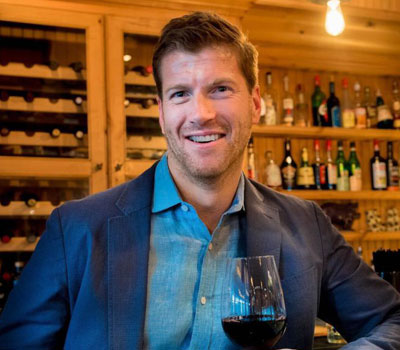Chicago’s The Purple Pig specializes in “cheese, swine and wine,” with a particular emphasis on the third item since Alan Beasey came on in 2009. Beasey, who has worked with some of Chicago’s top names in the wine business (Master Sommeliers Fernando Beteta, Ken Fredrickson and Douglas Marello included), has tripled the wine choices and extended the list into lesser-visited areas like Mexico, Michigan and Armenia. While it may be more work, it has also resulted in more sales—and more fun for him and his staff.


Rising Wine Sales
I’ve grown the list since I took over—it almost tripled in size. One of the things we did was add more wines by the glass. From a financial model, a lot of wine programs think wines by the glass can result in a loss—there’s waste involved—but our clientele really responded. We may have 130 wines by the glass, but our relative waste and cost have stayed pretty low.
Wine and Food, Literally
Each dish has a wine suggestion, like prosecco for the pigs’ ears, grenache with house-made ‘nduja and tempranillo for the pork spare ribs.
The double-edged sword of 130 wines by the glass and 800 bottles is that it’s a lot to choose from—it’s great for explorers but it can also be intimidating, off-putting. A lot of times, when guests want to keep it simple, they’ll request the wine recommended with a dish. What we’ll do, when the recommendation says, chardonnay, for example, is bring a white Burgundy and a Greek chardonnay and say: Here are two that we like with this dish; this one is more classic French, more austere with crisp acid; this one is more modern, with a little more toast and butter. For us, it’s no more difficult to bring two glasses and pour two tastes, and that way guests feel involved in the decision.
Greece: The Next Hot Area
Greece is one of those countries that, if it’s not already, has got to be the next hot area: there’s just so much diversity of wine and really high quality, and it’s getting better all the time. And at really pretty favorable price points. The xinomavros from Northern Greece can be a great alternative for people into Barolo and Barbaresco; the agiorgitiko can stand in next to Bordeaux; in Crete, there are some cool reds from indigenous varieties like kotsifali. And that’s what’s cool about Greek wines is that, although they have adopted some international varieties, they are making most of their wines from indigenous varieties. It gives the wines a little integrity, which is something I think people want to explore in beverages and food.
is W&S’s editor at large and covers the wines of the Mediterranean and Central and Eastern Europe for the magazine.
This is a W&S web exclusive. Get access to all of our feature stories by signing up today.
















